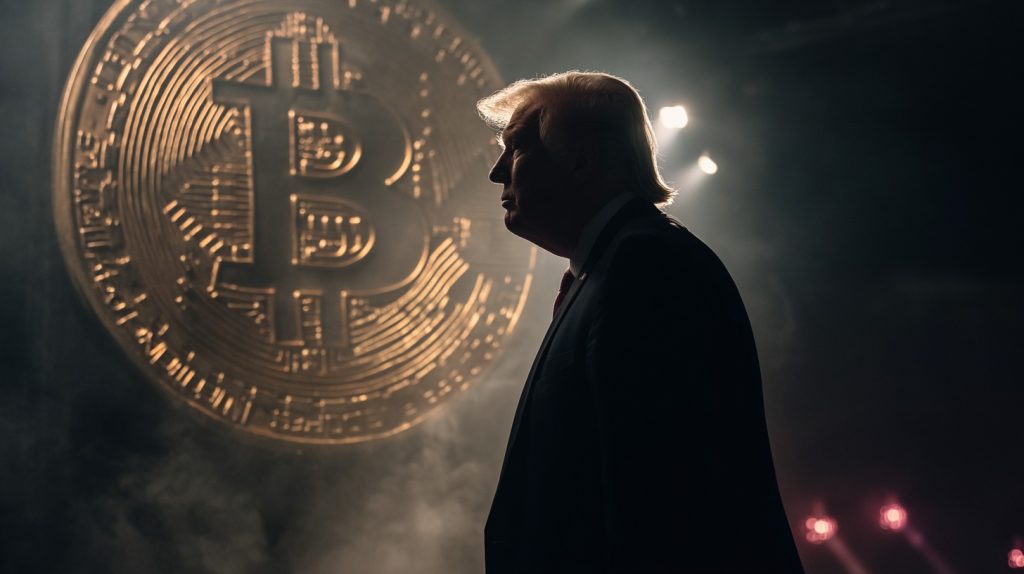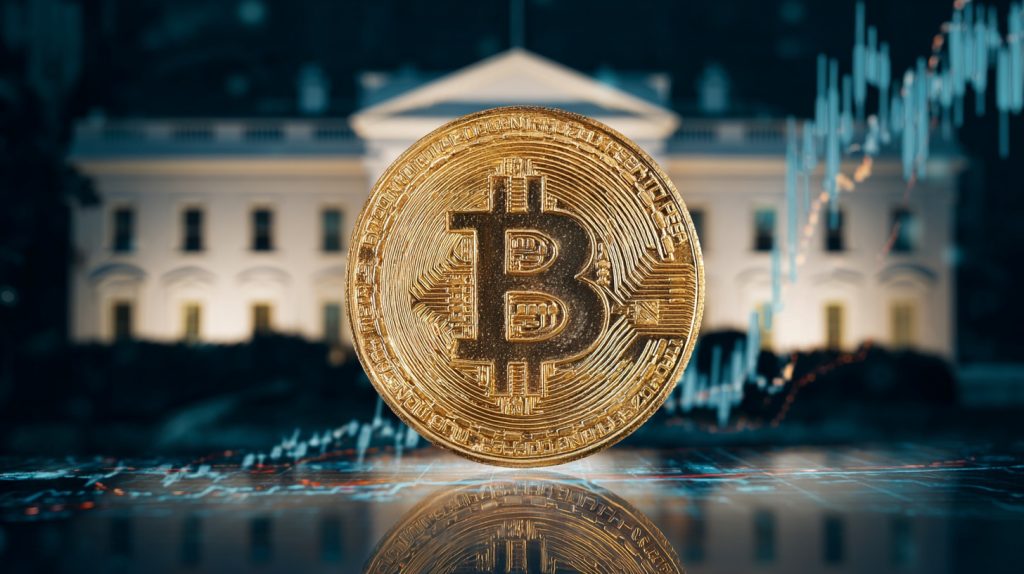
Table of Contents
The cryptocurrency world has never seen anything quite like this. President Donald Trump’s Trump Bitcoin investment approach has turned what was once considered a fringe asset class into a centerpiece of federal economic policy. Moreover, his administration’s aggressive pivot toward digital assets has sent shockwaves through global financial markets, triggering both euphoric rallies and panic selloffs in equal measure.
It’s a strange twist in the Trump narrative. The man who once dismissed Bitcoin as a scam now presides over an administration that treats cryptocurrency like a strategic resource on par with oil or gold. This isn’t just political theater. Real money is moving, institutions are repositioning, and the entire crypto ecosystem is being rewired in real time.
The Strategic Bitcoin Reserve That Changed Everything
In March 2025, Trump signed an executive order that made history. The Strategic Bitcoin Reserve and U.S. Digital Asset Stockpile formalized America’s relationship with cryptocurrency at the federal level. Consequently, the United States became the first major economy to officially treat Bitcoin as a reserve asset worthy of government protection.
Here’s what makes this particularly interesting: the reserve doesn’t involve the Treasury buying Bitcoin on Coinbase. Instead, it consolidates cryptocurrencies seized through federal forfeitures from criminal enterprises, darknet markets, and fraud cases. The government had been sitting on billions in Bitcoin, often selling it at the worst possible times.
According to White House calculations, premature sales had already cost taxpayers over $17 billion. The strategic reserve effectively said: we’re done being the dumbest player at the poker table. From now on, we hold.
How Trump Bitcoin Investment Drove Market Chaos and Growth
Bitcoin’s price action tells the story better than any policy document. After Trump’s election victory in November 2024, the cryptocurrency surged 60 percent in a matter of weeks. Bitcoin climbed from around $75,000 to briefly touch $125,000 by October 2025, a move that wiped out short sellers and forced institutional skeptics to reassess their positions.
However, the journey hasn’t been smooth. When Trump announced his strategic reserve in March, Bitcoin initially dropped 6 percent as traders realized the government wouldn’t be actively buying. Then came the tariff bombshell. Trump’s decision to slap 100 percent duties on Chinese goods triggered a crypto market meltdown that erased up to $200 billion in value.
Bitcoin briefly fell below $119,000. Ethereum dropped approximately 5.8 percent to around $4,100. The selloff demonstrated something crucial: Trump Bitcoin investment strategies don’t exist in a vacuum. Trade wars, geopolitical tensions, and macroeconomic policy all feed into crypto valuations now that the president himself is so deeply involved.
Trump Media’s $2 Billion Bitcoin Bet
If you want to understand how serious Trump is about cryptocurrency, look at Trump Media and Technology Group’s balance sheet. In May 2025, the company announced plans to raise $2.5 billion specifically for Bitcoin purchases. By July, Trump Media had accumulated roughly $2 billion in Bitcoin and related assets, representing approximately two-thirds of the company’s total holdings.
This is unprecedented territory. A sitting president’s media company is now one of the largest corporate holders of Bitcoin in America. The move has significantly boosted Trump’s personal net worth while in office, though it’s also raised thorny questions about conflicts of interest that the White House has largely dismissed.
Critics see a president using his office to pump an asset his company heavily owns. Supporters see a savvy businessman who recognized Bitcoin’s potential before the institutional crowd caught on. Either way, the money is real and the precedent is set.
American Bitcoin and the Family Mining Operation
The Trump family’s crypto involvement extends well beyond presidential policy. In March 2025, Trump’s sons launched American Bitcoin, a mining and acquisition venture backed by the family name. The firm partnered with Hut 8 to lease data centers for operations, following a broader industry trend toward institutional infrastructure investments that mirror strategies used by major financial players.
American Bitcoin announced plans to begin trading in September 2025, positioning itself as a vertically integrated crypto operation. The data center component is crucial here. Serious Bitcoin mining requires industrial-scale computing power, massive electricity consumption, and sophisticated cooling systems. This isn’t a hobby operation. It’s a multi-hundred-million-dollar bet that Bitcoin’s long-term value will justify the enormous upfront infrastructure costs.
The timing matters too. By entering the mining space just as his father’s administration rolled out favorable crypto regulations, the Trump sons positioned themselves to benefit from both policy changes and market momentum. Skeptics called it insider advantage. The Trumps called it entrepreneurship.
World Liberty Financial Expands the Empire

World Liberty Financial represents yet another arm of Trump-linked crypto ventures. Donald Trump Jr., serving as co-founder, presented expansion plans at the Token2049 conference in Singapore that included tokenized commodities and crypto-linked debit cards.
The vision is ambitious: build a parallel financial system that operates alongside traditional banking but runs on blockchain rails. If successful, World Liberty Financial could process payments, store value, and facilitate international transfers without touching legacy financial infrastructure. That’s the promise, anyway.
Realistically, the venture faces significant regulatory hurdles, technical challenges, and competition from better-funded fintech companies. Still, the Trump name opens doors, and in crypto, momentum and narrative matter almost as much as fundamentals.
GENIUS Act and the New Regulatory Framework
Trump signed the GENIUS Act into law in July 2025, legislation designed to establish America as the undisputed global leader in digital assets. The law provides clearer guidelines for crypto businesses, reduces regulatory uncertainty, and encourages institutional investment.
Previously, crypto companies operated in a gray zone where rules changed unpredictably and enforcement seemed arbitrary. The GENIUS Act doesn’t solve every problem, but it provides a framework that allows businesses to plan long-term without wondering if regulators will shut them down tomorrow.
This legislative support has catalyzed institutional adoption. Major banks that once avoided cryptocurrency now offer Bitcoin custody services and crypto trading desks. Traditional investment firms have launched Bitcoin-focused products to meet surging demand from clients who no longer view digital assets as too risky or legally questionable.
Institutional Adoption Accelerates Under Presidential Cover
The psychological impact of presidential endorsement cannot be overstated. When the leader of the world’s largest economy publicly backs Bitcoin and implements Trump Bitcoin investment strategies at the federal level, it sends powerful signals to institutional investors who had remained cautious.
The Strategic Bitcoin Reserve carries particular significance for foreign governments. If the United States maintains strategic Bitcoin holdings, other nations may feel compelled to follow suit rather than risk being left behind if cryptocurrency becomes a genuine reserve asset. This cascade effect could fundamentally reshape international finance over the next decade.
Sovereign wealth funds have started exploring Bitcoin allocations. Central banks are studying digital asset integration. Even traditionally conservative pension funds are considering small crypto positions. None of this happens without Trump’s full-throated endorsement legitimizing the space.
Volatility, Risk, and the Tariff Factor
For all the bullish momentum, Trump Bitcoin investment strategies have introduced new volatility sources. The tariff-driven crypto crash in October demonstrated that political decisions now have immediate, significant impacts on digital asset prices. Investors must navigate not just traditional crypto dynamics but also the unpredictable nature of Trump’s trade policy and diplomatic moves.
Furthermore, the concentration of Bitcoin holdings in Trump-related entities creates systemic risk. If Trump Media or other family ventures liquidated significant portions of their holdings, the resulting price impact could be severe. Critics point to these concerns as examples of how personal financial interests potentially conflict with sound public policy.
Market watchers now track Trump’s social media posts, policy announcements, and even offhand comments for clues about potential market-moving developments. This level of presidential influence over an asset class is virtually unprecedented in modern American finance.
What Comes Next for Presidential Crypto Policy
As October 2025 unfolds, Bitcoin remains highly volatile but fundamentally stronger than it was before Trump’s election. The combination of federal support through the Strategic Bitcoin Reserve, increased institutional adoption, and massive investments by Trump-affiliated entities has created a foundation for continued growth despite short-term fluctuations.
The upcoming White House Crypto Summit and continued legislative efforts signal that Trump’s commitment to making America the “crypto capital of the world” isn’t just campaign rhetoric. For investors and industry participants, this means navigating an environment where political developments can shift market sentiment as quickly as technological innovations.
Several key questions remain unanswered:
- Will other nations follow America’s lead in establishing strategic Bitcoin reserves?
- How will Trump’s Bitcoin holdings impact his policy decisions on crypto regulation?
- What happens if Bitcoin experiences a prolonged bear market while the president is heavily invested?
- Can Trump-linked ventures achieve their ambitious goals or will they become cautionary tales?
The answers will shape not just crypto markets but potentially the entire financial system’s evolution over the coming years.
The Bottom Line on Trump Bitcoin Investment Impact
President Trump’s surprising move into Bitcoin investing has unquestionably shaken markets. More importantly, it has fundamentally altered the conversation around cryptocurrency’s role in global finance. What seemed like a fringe asset class just two years ago has been thrust into mainstream acceptance through political endorsement, strategic reserves, and massive institutional investments.
Whether this proves to be lasting transformation or temporary bubble remains unclear. What we know for certain is that the cryptocurrency market of 2025 looks dramatically different than it did in 2023, and Trump’s influence has been the single most important factor in that change.
Bitcoin continues to test new highs and experience sharp corrections in roughly equal measure. Investors navigating this market face a reality where politics and technology are now inextricably linked. The Trump Bitcoin investment phenomenon represents more than just one president’s financial strategy. It’s a test case for how government involvement shapes emerging technologies and the markets built around them.
The experiment is ongoing. The stakes are enormous. And the outcomes will reverberate long after Trump leaves office, regardless of when that happens.